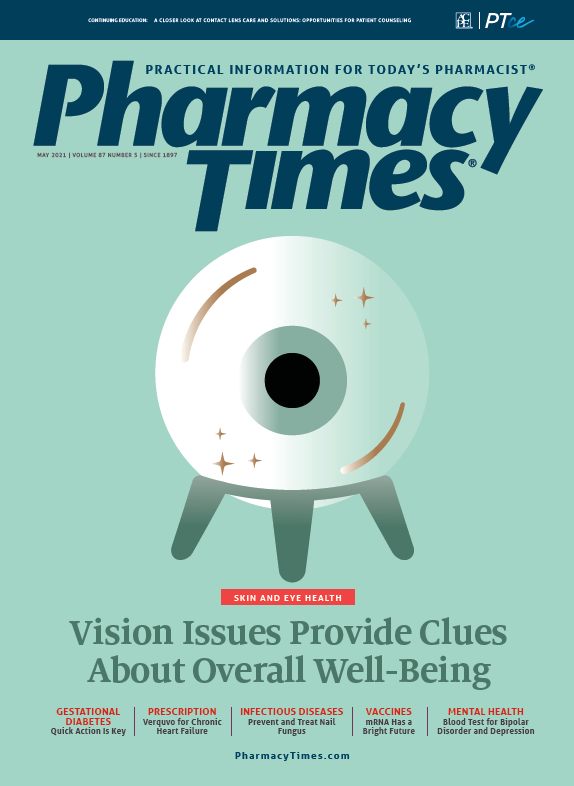Incontinence Can Lead to Skin Problems
Treatment options include medications and recommendations to improve hygiene.
Fecal and urinary incontinence can cause bleeding, burning, cracking, and irritation along the genitals, rear, and thighs, sometimes near areas covered by protective pads or underwear.
Patients with incontinence-associated dermatitis (IAD) may experience discomfort and even pain, which is why the rashes should be treated as quickly as possible.1
IAD—sometimes called diaper rash, irritant dermatitis, moisture lesions, or perineal dermatitis—is common among individuals with incontinence, including many older patients and newborns.1 The ammonia in urine can cause burns and redness as extreme as sunburn. Friction around the genitals, combined with clothing and wetness, can exaggerate these symptoms.
IAD affects 20% of individuals who are hospitalized, 50% of critically ill patients, 7.6% of those in long-term acute care, and 3.4% of those in nursing homes on a regular basis.2 Approximately 52% of residents in community-living facilities report IAD at some point in their lives.2
Symptoms of IAD can be mild, moderate, or severe. Mild symptoms can include light red, slightly raised, tender areas. Moderate symptoms can include raised bumps, redness, some peeling, and slight swelling. Severe symptoms can include intense cracking, peeling, redness, swelling, and even bleeding in affected areas. Some severe cases may also involve bacterial or yeast infections.
Treatment options for IAD may include medications as well as recommendations to improve hygiene. This includes eliminating and preventing symptoms by keeping the area clean and dry as much as possible. Keeping the affected area clean includes regularly washing with soap and water and taking frequent showers, as well as drying thoroughly afterward. In addition, changing clothing can help prevent bacteria or virus growth. Absorbent padding can also help minimize skin exposure to bacteria. Another recommendation is to moisturize the skin with hydrogel- or petroleum-based products after drying. Zinc oxide can be a good choice.
In terms of medications, creams and ointments that can be used.
These include Balmex AdultAdvantage Skin Relief Cream (Randob Labs), Calmoseptine Ointment (Calmoseptine, Inc), Desitin Daily Defense
Cream (Desitin), and Z-Bum Daily Moisturizing Diaper Rash Cream (GM Pharmaceuticals). Most of these creams should be used several times a day and applied to a clean surface on the skin. Encourage patients to read the directions on the label.3 Other treatment options include antibacterial and antifungal creams. Based on the severity, especially if bleeding is involved, patients should check with health care providers before trying medication and treatment options to prevent the skin damage from worsening.
Conclusion
With approximately one-third of patients with fecal and urine incontinence developing chafing, irritated skin and rashes, it is important to address
and treat IAD, which primarily affects older patients and newborns.4 If IAD is not treated properly and in a timely manner, it can lead to other major complications such as serious external and internal infections. In addition, IAD can affect quality of life for patients already suffering from other chronic conditions, making their situation much worse and more painful, so it is important to make treatment a priority.
Saro Arakelians, PharmD, is vice president of pharmacy operations at a pharmacy in the Los Angeles, California, area.
REFERENCES
- Silver N. What is incontinence-associated dermatitis and how is it treated? Healthline. Updated April 7, 2017. Accessed April 7, 2021. https://www.healthline.com/health/overactive-bladder/incontinence-associated-dermatitis[RP1]
- Bliss DZ, Funk T, Jacobson M, Savik K. Incidence and characteristics of incontinence-associated dermatitis in community-dwelling persons with fecal incontinence. J Wound Ostomy Continence Nurs. 2015;42(5):525-530. doi:10.1097/WON.0000000000000159
- Chertoff C. What you should know about adult diaper rash. Healthline. Updated July 3, 2019. Accessed April 7, 2021. https://www.healthline.com/health/adult-diaper-rash#treatment[RP2].
- Brown H. Incontinence-associated dermatitis. DermNet Nz. September 2019. Accessed April 7, 2021. https://dermnetnz.org/topics/incontinence-associated-dermatitis/#:~:text=Incontinence%2Dassociated%20dermatitis%20can%20affect,and%20population%20studied%20%5B1%5D [RP3]

